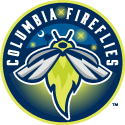 To celebrate Black History Month, the Columbia Fireflies are joining MLB in naming the top five black players to play baseball in the Midlands region. Columbia has a decorated baseball history that first saw professional baseball in the late 1800’s. The first Major League team to make an official relationship
To celebrate Black History Month, the Columbia Fireflies are joining MLB in naming the top five black players to play baseball in the Midlands region. Columbia has a decorated baseball history that first saw professional baseball in the late 1800’s. The first Major League team to make an official relationship
To celebrate Black History Month, the Columbia Fireflies are joining MLB in naming the top five black players to play baseball in the Midlands region. Columbia has a decorated baseball history that first saw professional baseball in the late 1800’s. The first Major League team to make an official relationship with Columbia was the Cincinnati Reds, who announced their affiliation with the city in 1954.
Across the expansive list of players, this is the group that stands out over the rest.

5.) Our countdown starts with Ron Washington. While Washington didn’t play in Columbia, many people don’t know Washington for his eight-year Major League career in the middle infield, they know him for his time as a Manager and coach. His coaching career began with the Capital City Bombers, where he manned the helm in 1993 and 1994. Washington led the Bombers to 123 wins across those two seasons before getting an offer from the Oakland Athletics to help out their Major League staff during the start of the Moneyball era. Washington is credited as teaching Scott Hatteberg how to play first base after Billy Beane signed him. The Louisiana native began his Major League coaching career in 2007 with the Texas Rangers. In parts of eight seasons with the Rangers, Washington led the club to the World Series in 2010-11 and to a third playoff berth in 2012. He would finish his managerial career with a 664-611 record after resigning from his post with the Rangers in 2014. In 2016, he made his return to coaching in Major League Baseball, this time as a third-base coach for the Atlanta Braves. Washington was finally able to win his first World Series when the Braves took home the title in 2021.

4.) Next up, the first former player in Columbia to make the list is Mo Bruce. While Bruce never played in the Majors, he had a profound impact on the last championship season in Soda City. The middle infielder played for the Capital City Bombers in the 1998 campaign and led the League with a .341 average in 126 games. Hickory’s Jimmy Terrell was second in the league with a .337 clip. Bruce wasn’t selected until the 54th round of the 1994 draft, but he did more than provide an elite average for Capital City. He also clubbed 15 homers and drove in a team-high 74 RBI on Capital City’s chase for the South Atlantic League crown. Over the course of his career, Bruce spent six seasons in the minors, including two in AAA. He held a career average of .289 and had 38 total homers. His input was a big reason why Baseball America ranked that Bombers’ team first overall in the last 1998 power ranking they put out that season. Bruce also had an intangible that added to the team’s success: his veteran presence. A lot of guys in that line-up viewed Bruce as a third coach on the field. Bruce was a year or two older than most of the other players on that roster. That magical season at Capital City Stadium is where Bruce put together his top power and average numbers to help culminate in a ring, and that’s why he clocks in at number four in our list.

3.) Simeon Woods-Richardson is the only pitcher in the top-five, but Woods-Richardson has established himself, not only as one of the top pitchers in Columbia history, but one of the top young, exciting prospects in all of baseball, all before his 22nd birthday. Prior to the 2021 season, Baseball America ranked the righty as the 60th-best prospect in baseball. The magazine gives credit to his control of all four of his pitches and most believe he will make his Major League debut some time this season. He wasn’t ignored by the other top publication in baseball scouting. MLB.com Pipeline called Woods-Richardson the 87th-best prospect in baseball prior to the 2021 season. In Columbia, the Sugar Land, Texas native racked up strikeouts at an incredible rate. He started all 20 of his appearances for the Fireflies, punching out 97 batters in 78.1 frames. That’s 11.15 K/9 IP! His overall numbers have been hampered by a lot of the hype around him that has led to Woods-Richardson being involved in two blockbuster trades in the last three seasons. First, he was traded with LHP Anthony Kay for All-Star Marcus Stroman in 2019. Next the wheels brought him to Minnesota where he was traded with SS Austin Martin for All-Star Jose Berrios. While Woods-Richardson has had to adapt to playing in three different farm systems, his talent was recognized when he was selected to pitch in the 2020 Tokyo Olympic Games and was awarded a silver medal for his participation with team USA. Simeon Woods-Richardson’s career is far from over, but what he’s accomplished already is enough for him to end up at number three on this list!

2.) Our next candidate never played baseball professionally in the Midlands, but it would be a crime to leave someone so impactful off our list. Larry Doby was born in Sumter, less than 50 miles from Segra Park. When Doby was young, his family moved to New Jersey, where he would eventually play for the Negro League Newark Eagles from 1942-1944. Like many others in that era, Doby stepped away from baseball to join the war effort at the peak of World War II. The star ballplayer joined the Navy and when he came back to the states in 1946, he played again for the Newark Eagles. He didn’t stick to baseball though, Doby broke the color barrier in the ABL, a precursor to today’s NBA and then he helped the Eagles win a championship in 1946 before the Cleveland Indians signed him in 1947. Later that season, Doby followed Jackie Robinson to become the second black player in Major League Baseball. He broke the color barrier in the American League, and then followed it with plenty of accolades. The next year, on his way to winning a World Series with the Indians, Doby became the first African American to hit a homer in a World Series game. Then, in 1952, on another run that saw Cleveland finish second in the American League, Doby became the first black player to lead a league in homers. He hit 32 homers in the campaign, beating teammate Luke Easter by a single homer for the league lead. Over the course of Doby’s career, he played in seven All-Star games and tallied five-100 RBI seasons and eight-20 home run seasons. Doby was elected into the Hall of Fame in 1998. His impact on the game of baseball will never be forgotten.

1.) Now it’s time for our top spot on the list. There are plenty of people who had incredible careers in Columbia and beyond, but when you combine the impact a player had in the Midlands with a Major League impact, you have to hand the top award to Frank Robinson who spent parts of two summers playing for the Columbia Reds in 1954-55. During his time in Columbia, The Judge paced the 1954 team with a .336 average and 25 homers in 132 games. In 1955 he added 12 more homers in 80 games before getting the call straight to the majors in 1956 where he won the National League Rookie of the Year award as a 20-year-old. After a decade with the Reds, Robinson was traded to the Orioles during the 1965 campaign. In his first season on the East Coast, Robinson won the AL Triple Crown, blasting 49 homers to pair with a .316 average and 122 RBI. That season, Robinson won the AL MVP award, four years after he won the NL MVP award with the Reds, thus becoming the first player to win the MVP for both leagues. The slugger also tallied a World Series MVP in 1966. He was the heart of the Orioles lineup that won three AL Pennants from 1969-71. All-in-all, Robinson was a 14-time All-Star and has the most walk-off hits (26) in Major League history. Robinson’s 586 homers are the 10th-most all-time. Robinson wasn’t done there though. After his playing days ended in Cleveland, Robinson became the manager for the Indians, making his way as the first black manager in Major League Baseball. He would manage for the Giants, Orioles, Expos and Nationals before retiring and took home the hardware for the 1989 American League Manager of the Year. Robinson truly was one of the all-time greats, and that’s why he leads our list of top black players to come through Columbia.
